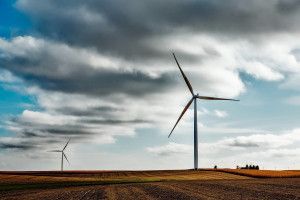This Is How To Reduce Your Business’s Carbon Emissions In 2021

If you want your business to survive the long haul, then minimizing the carbon emissions it produces is vital. The reason? Well, apart from it being the morally right choice, consumers now expect greener practices from their businesses, it can save you money and it’s great PR. The good news is you can find out all about how to reduce your business’s carbon emissions in the post below. Read on to find out more.
Make sustainability an operational value for your business
Operational values are a commitment to run your business in a certain way. The idea is that such values should guide everything you do, from the most significant decisions to the choices you make when ordering office supplies . By ensuring that sustainability in the form of reduced C02 emissions is woven into the fabric of your business, you have the best chance of affecting real change.
Use renewable fuels
One of the most straightforward ways for any business to reduce their C02 emissions is to use renewable fuels instead of fossil fuels. The good news is there are many different types of renewable fuels to consider. The first of these is solar energy generated by collecting the rays of the sun. Then there is wind energy which is generated by harnessing the power of the wind with specially designed mills.
Alternatively, biomass fuels are also becoming very popular. Indeed, Geoff Hirson , a renewable field expert, suggests that [they will] offer [the] opportunity to reach [a]‘carbon neutral’ Future. Something that means opting to use fuels converted from biomass could be the perfect way to ensure your business reduces its carbon emissions.
Swap to a fleet of electric vehicles
Many businesses need a fleet of vehicles to run, from company cars that allow sales reps to travel the country, to vans that bring resources and deliver their products. Indeed, even businesses that do not have their own fleet often outsource this task to a professional logistics firm. Of course, the problem here is that vehicles traditionally pump a great deal of C02, out and into the atmosphere. However, some solutions can help here.
The first is to opt to use a carbon-neutral logistics firm for the needs of your business. While the second is to invest in your very own fleet of electric vehicles (EVs). After all, EVs have much lower direct emissions and are also being manufactured with fewer emissions all the time. However, it is also wise to remember that even when using EVs, choosing local and carbon-neutral suppliers wherever possible will also help to make a big difference here.
Reuse and recycle
Finally, you can also reduce your business’s carbon footprint by reusing and recycling as many of your resources as possible. Indeed, recycling is vital to any business looking to reduce their C02 emissions. This is because every time you reuse an item rather than pick up a new one, you save vast amounts of energy that would have been used in the production process. Add that up over the year and it can make a huge difference in C02 emissions.


